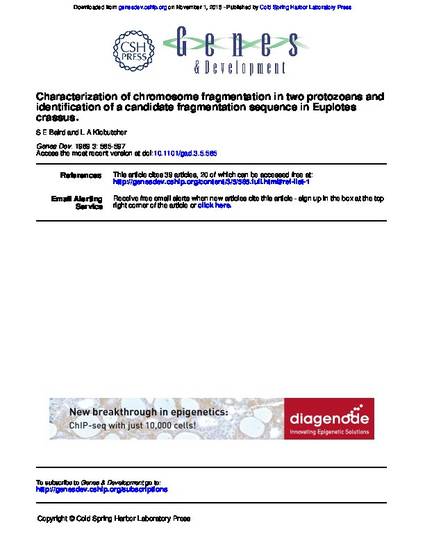
Following the sexual cycle, hypotrichous ciliated protozoans fragment a set of their micronuclear chromosomes to generate the thousands of short, linear DNA molecules present in the transcriptionally active macronucleus. We have used a hybrid selection procedure to examine macronuclear DNA molecules for subtelomeric length heterogeneity to determine whether chromosome fragmentation occurs at unique or multiple sites. The results suggest that multiple, but closely spaced, chromosome fragmentation sites are used by Oxytricha nova. In contrast, Euplotes crassus uses unique chromosome fragmentation sites in a reproducible manner to generate the ends of macronuclear DNA molecules. Additional studies compared DNA sequences in the vicinity of chromosome fragmentation sites in an attempt to define cis-acting sequences that direct the fragmentation process. A conserved sequence was found near chromosome fragmentation sites in E. crassus. The location of the conserved sequence suggests that chromosome fragmentation involves staggered cuts of the micronuclear DNA molecules.
Available at: http://works.bepress.com/scott_baird/25/
